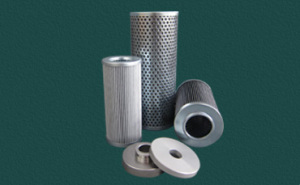E-mail seo@sino-purification.com

Time:2025-11-07 13:21:03 Reading volume:
The technical parameters of an oil purifier filter element determine its filtration efficiency, service life, and compatibility. Understanding these indicators helps ensure cleaner oil and more reliable system performance.

Absolute Accuracy: Filters out 100% of particles above a specific size (μm). Used in systems with strict cleanliness needs.
Nominal Accuracy: Removes over 98% of particles of a certain size—common in general filtration.
β Value: The ISO method for defining accuracy. For example, β₁₀ = 200 means 99.5% efficiency for 10 μm particles. A higher β value means higher precision.
Shows how well the filter captures contaminants, usually ≥ 99% for fine particles. Higher efficiency extends oil and equipment life.
Initial Pressure drop: The pressure loss of a new element at rated flow—lower is better.
Final Pressure drop: When reached, the element should be replaced to prevent unfiltered oil from bypassing.
Indicates how much contamination (g) the element can hold before clogging. Higher capacity means longer use and fewer replacements.
Outer diameter, inner diameter, and height must match the purifier housing. Interface types (threaded, flange, bayonet) ensure tight sealing.
Filters must resist collapse and withstand system pressure. Seals made from nitrile rubber or fluororubber prevent leakage and maintain pressure stability.
Glass Fiber: High precision, temperature-resistant—most widely used.
Cellulose: High dirt-holding but lower accuracy.
Metal Mesh or Stainless Steel: Washable and strong, ideal for coarse filtration.
Polymer/Composite: For special oils or temperature ranges.
Usually metal or engineering plastic, providing structural strength and corrosion protection.
All materials must be chemically stable with the working oil (e.g., hydraulic oil, transformer oil, or gear oil) and resistant to corrosion or swelling.
Working Pressure: The maximum pressure the element can safely handle.
Temperature Range: Ensures consistent performance under heat or cold.
Flow Rate: The designed flow capacity; excessive flow can increase pressure drop and shorten filter life.
High-quality filter elements comply with ISO and GB standards, such as:
ISO 2941: Collapse resistance
ISO 2942: Structural integrity
ISO 2943: Material compatibility
ISO 16889: Filtration performance (Multipass test)
Industry certifications may also be required for power, petrochemical, or manufacturing applications.
Identify oil type and cleanliness level (ISO 4406 or NAS 1638).
Choose proper filtration accuracy (β value or absolute rating).
Match size and interface with your purifier.
Check material compatibility with your oil and temperature.
Balance performance and cost: Prefer filters with high dirt-holding capacity and low initial pressure drop.
Summary
Choosing the right oil purifier filter element ensures cleaner oil, fewer failures, and longer equipment life. By evaluating key parameters—accuracy, efficiency, pressure difference, materials, and standards—you can make a reliable, cost-effective selection for your oil purification system.